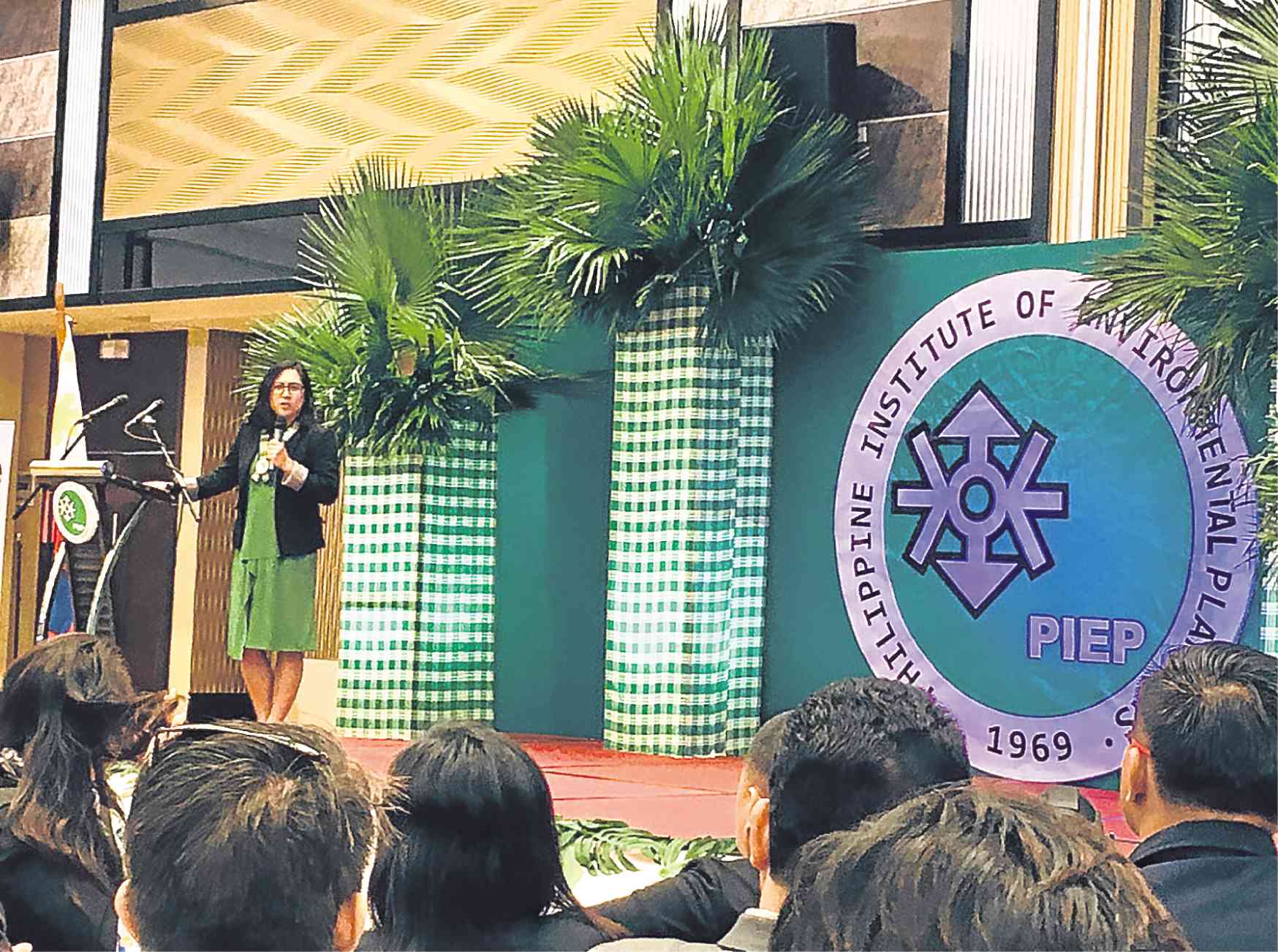
PIEP National President Mia Quimpo emphasizes the importance of solidarity among environmental planners in making Philippine cities better.
Some 1,400 environmental planners from all over the country converged at the 27th National Convention of the Philippine Institute of Environmental Planners (PIEP) held in Iloilo City earlier this month to coincide with the World Town Planning Day.
With the theme, Forging Partnerships to Achieve the Sustainable Development Goals, the convention showcased highlights across governments and development sectors.
PIEP national president Maria Theresa Quimpo emphasized how building relationships across Philippine planners is key to improving how urban managers can learn from one another and bring solutions to cities, municipalities, provinces, regions, and metropolitans.
“We have grown from being a small group to a bigger, more organized PIEP. As environmental planners, let us work together and collaborate across regions and learn from our differences,” Quimpo said.
Growth
Since its inception in 1968, the PIEP has grown from having nine founding council members to almost 4,500 licensed environmental planners.
As of the convention, 23 professional organization chapters were established: Batangas, Bohol, Camarines, Caraga Region, Cebu, Cotabato-Maguindanao, Davao, DavSurOcci (Davao del Sur and Davao Occidental), Eastern Visayas, Laguna, National Capital Region, Negros Oriental, Northern Luzon, Northern Mindanao, Nueva Vizcaya-Quirino, Palawan, Pampanga, Sorsogon, Socksargen Region, Quezon, Western Visayas, Zampenbasulta, and the Kingdom of Saudi Arabia, the only international chapter.
The convention also improved on its current by-laws, which were last amended in 1996. Changes included establishing committees to specialize on research, knowledge, and advocacies and policies, and designating more officers to manage leadership across the chapters.
Strengths of localities
As host of the convention, Iloilo City showcased its growth as a meetings, incentives, convention, exhibition (MICE) tourism hub. Collaborations between Metro Iloilo and Guimaras were highlighted as a best practice, bringing solidarity of local governments to strengthen a region.
Planners who work with other cities, municipalities, and provinces also showcased their progress in city development.
Baguio City presented that “pagkamalikhain” (creativity) is included in its strategic framework, giving value to arts and culture in becoming a creative city. South Cotabato emphasized the importance of tangible results in planning, the convergence of planning initiatives across sectors, and making government bureaucracies efficient enough to include constituents.
The environmental planning profession, which in the 1960’s only consisted of a handful of people, now has almost 4,500 licensed professionals.
Developmental themes
Planners from the United Nations Human Settlements Programme (UN Habitat) and the United Nations Development Programme (UNDP) provided frameworks and guidance on anchoring local planning work with the sustainable development goals (SDGs), the New Urban Agenda, and building climate resiliency for cities.
Thematic learnings were shared through continuing professional development sessions. Among the topics in social planning were gender sensitivity in cities, tenure for the urban poor, and community driven development in rural areas.
Ecological topics included forests in land use and environmental engineering in planning. Young planners further shared about their learnings from the YSEALI fellowship program of the United States government, which included placemaking and public spaces, resilience and emergency management, and mapmaking, trails, and data-driven planning.
Learnings
Key insights about the convention ranged from urban design to socio-economic planning, and included thoughts about the need to grow the profession.
Jessie Christopher Lapinid of the Zamboanga City Planning Office shared how “beautiful designs and public spaces can create an ideal and livable community.” Juvelyn Boniba-Pamonag of NEDA Region 6 meanwhile emphasized learnings on addressing inequalities: “Effective planning entails involving people, reaching out to the poor and vulnerable, and setting realistic goals and introducing interventions that are translated into concrete actions.”
Marlon Jinon, also from NEDA Region 6, provided insights about the profession: “I learned that we have to go beyond compliance and make contributions to ensure that environmental planning becomes more relevant and inclusive. Also, enabling conditions should be laid out or institutionalized to empower the new generation of environmental planners who are eager to challenge the norms and energize the planning profession.”
The author is an environmental planner and advocate for sustainable cities. She worked as a consultant for the UN HABITAT Achieving Sustainable Urban Development Programme in 2015.